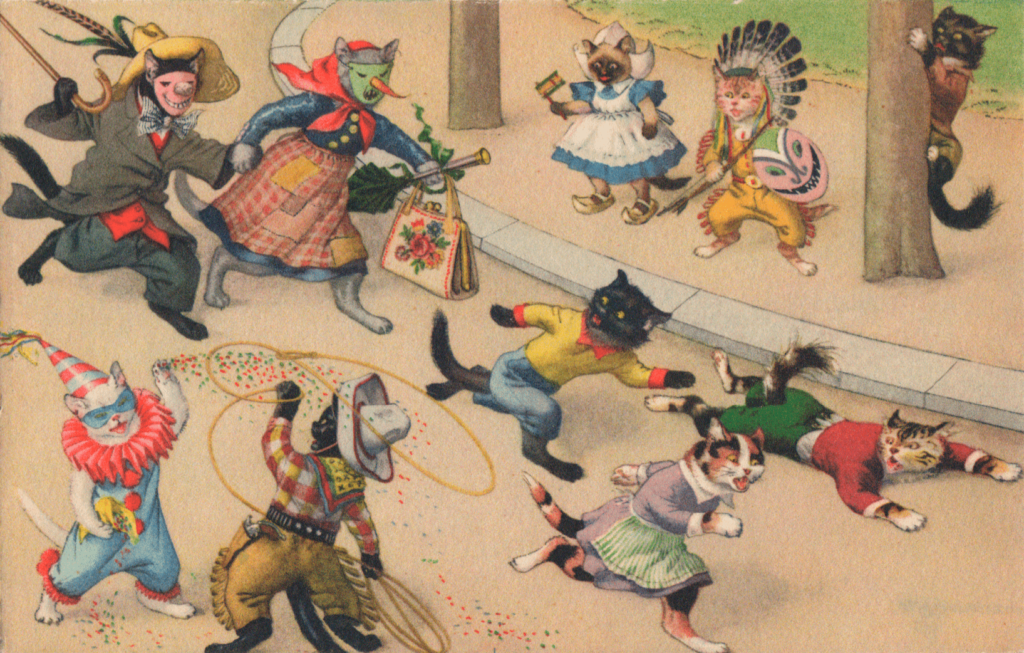Ghouls, Goblins, and Capitalism
The scariest thing about Halloween is the adults who insist on celebrating it

I have always felt, in a vague way, that Halloween is the most baffling and boring of holidays. I’m not sure I liked it even as a child, although the candy I collected from neighbors and skimmed off my father—he bought it in enormous quantities—was just fine. In adulthood, the main thing that matters about October 31 is that it marks the time of year, as Memorial Day does for wearing white, when it’s acceptable to fish my turtlenecks from the closet. (Global warming is challenging this.)
Then the other day I came across a 2012 Forbes article, “How Adults Have Hijacked Halloween From Kids,” by Larissa Faw, which articulates much of what I find so lame about the festivity, namely that it is yet another instance of infantilization in American life. (Men like my father bought all of that candy for the kids, after all; he would not have been caught dead wearing a disguise.) It is no original insight to observe that millennials are defined to an astonishing extent by their desire to remain childlike, but they are also happy capitalists. “Americans believe age 14 is when children need to stop trick-or-treating,” Faw writes, “but that doesn’t mean they can’t find other ways to celebrate Halloween and fund their own sugar rushes. This prolonged adolescence has transformed Halloween from a kid-centric holiday into an $8 billion a year industry for kids young … and old.”
Perhaps this is why the French—more ambivalent about consumerism and much more antagonistic to the cult of youth than Americans—have never really taken to the holiday. It almost makes up for their lack of interest in Thanksgiving.


